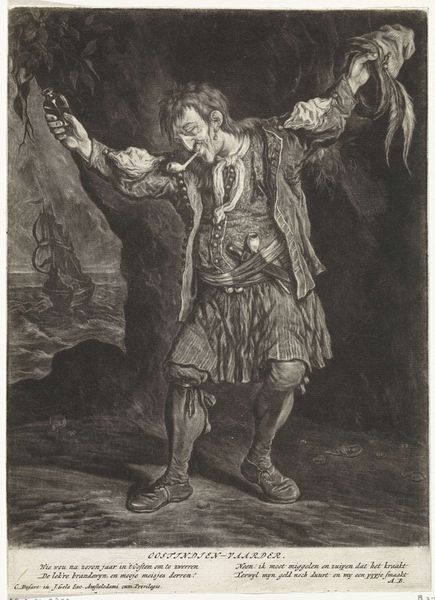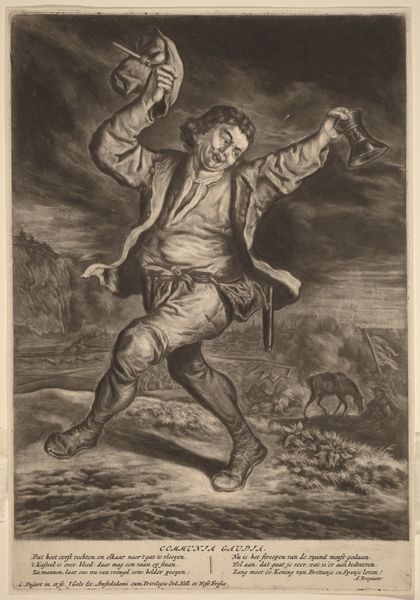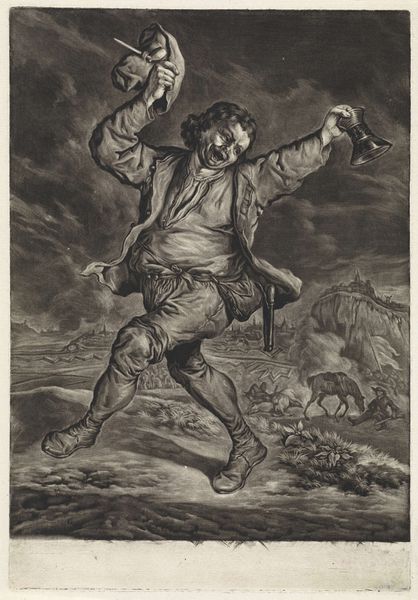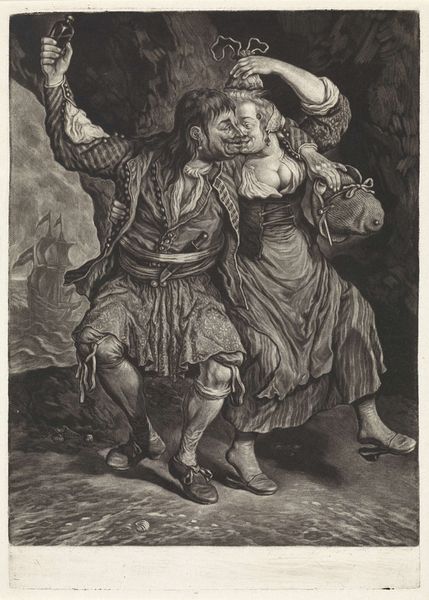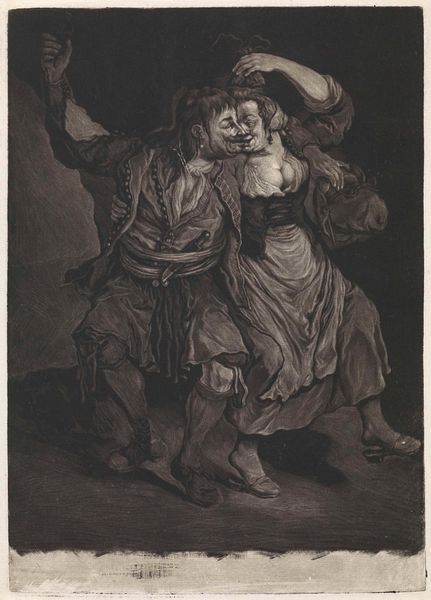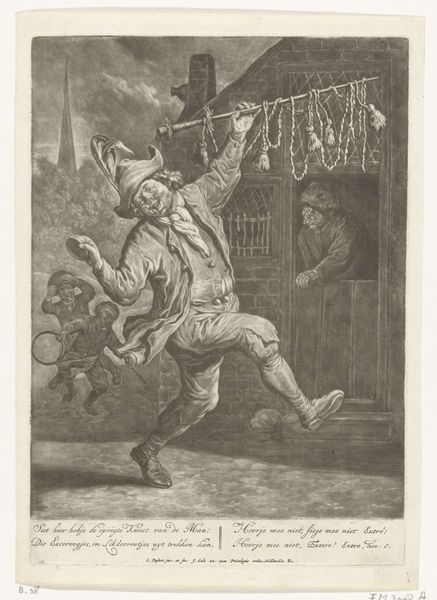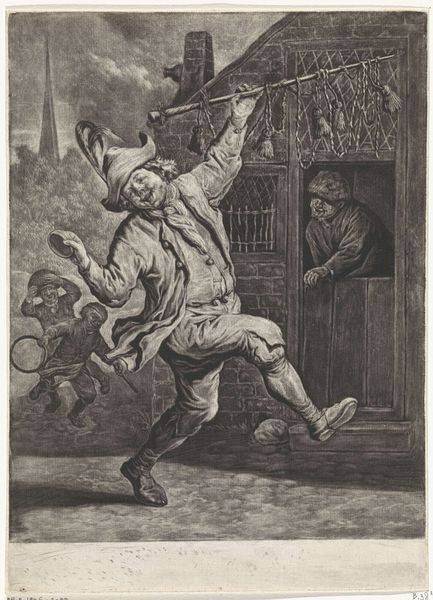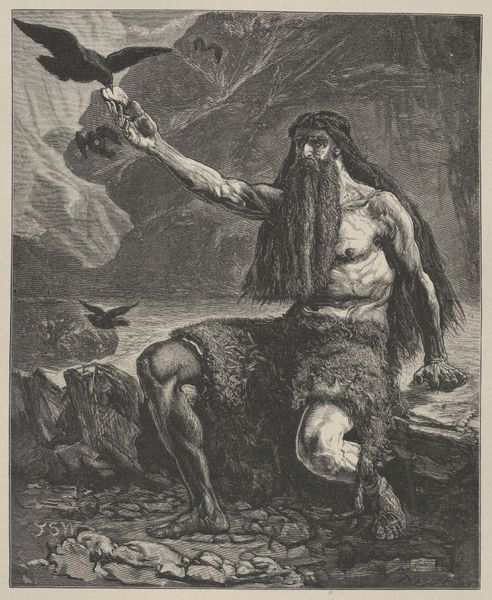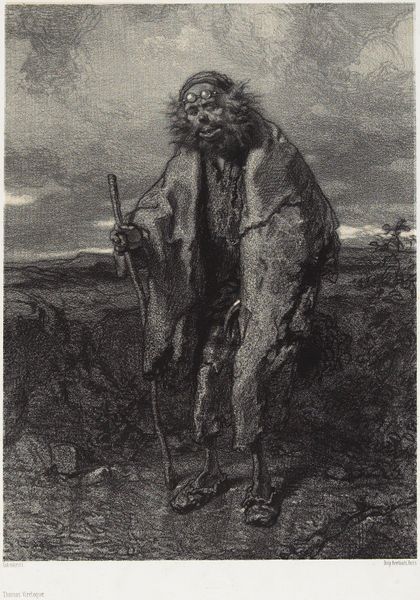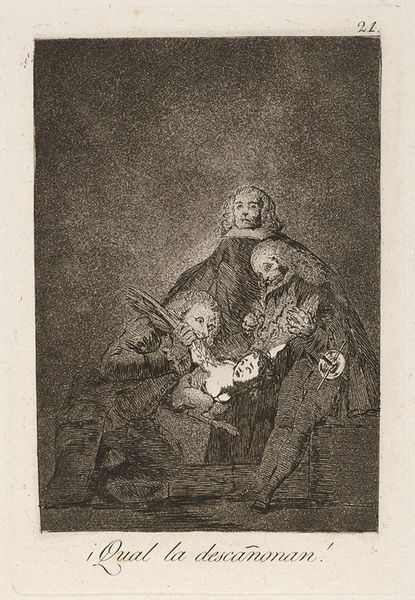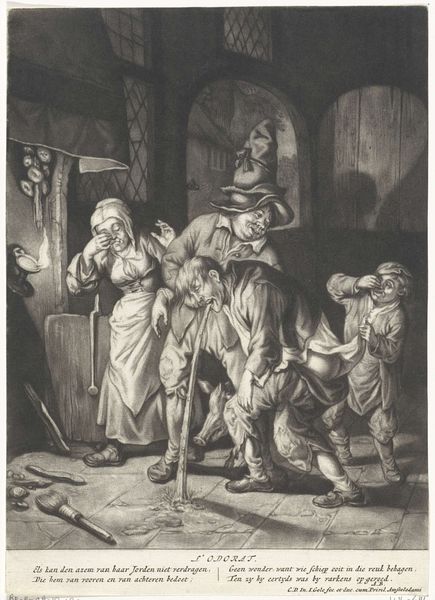
drawing, charcoal
#
portrait
#
drawing
#
baroque
#
sculpture
#
charcoal drawing
#
genre-painting
#
charcoal
#
charcoal
Dimensions: height 245 mm, width 180 mm
Copyright: Rijks Museum: Open Domain
Cornelis Dusart created this etching, titled "De Oost-Indiëvaarder," in 1695. The image depicts a man, presumably a sailor, raising a bottle and a headdress. This work opens a window into the Dutch Golden Age, a period marked by extensive overseas trade, especially with the East Indies. The Dutch East India Company, or VOC, dominated trade routes and amassed immense wealth. Dusart's print subtly critiques this booming commerce. The sailor, likely drunk, suggests the moral decay that accompanied economic success. His disheveled appearance and inebriation hint at the human cost of colonialism and the excesses of the wealthy merchant class. The darkness surrounding the figure emphasizes the hidden truths and darker consequences of this historical moment. To fully understand this etching, one should consider the historical context of the Dutch maritime empire and the critical voices that emerged during this period. By delving into these sources, we can better understand the complex interplay between art, commerce, and morality in the Dutch Golden Age.
Comments
No comments
Be the first to comment and join the conversation on the ultimate creative platform.
